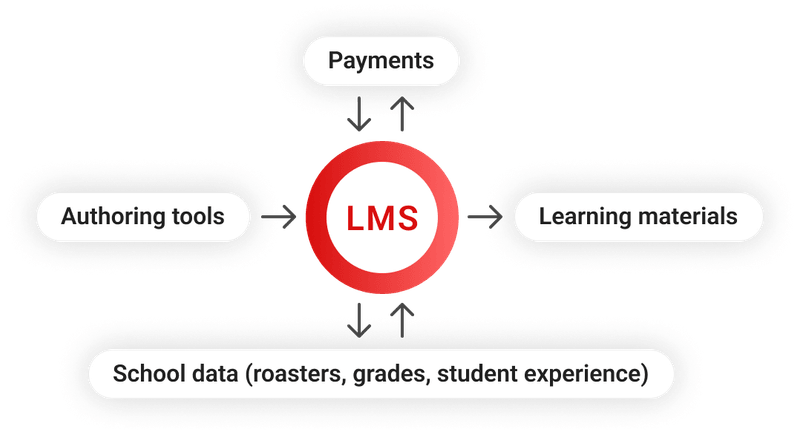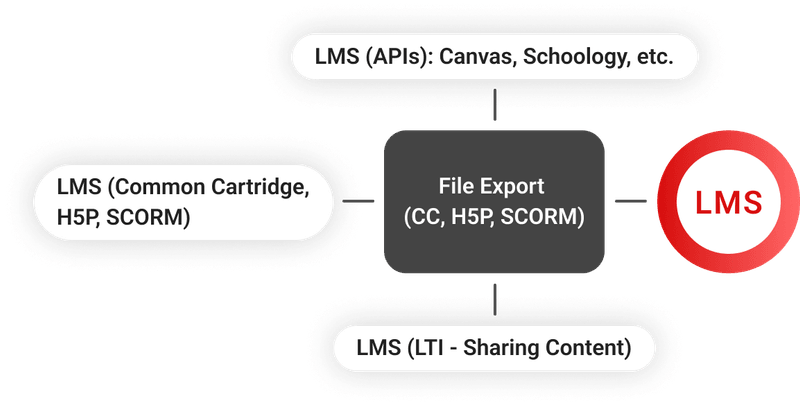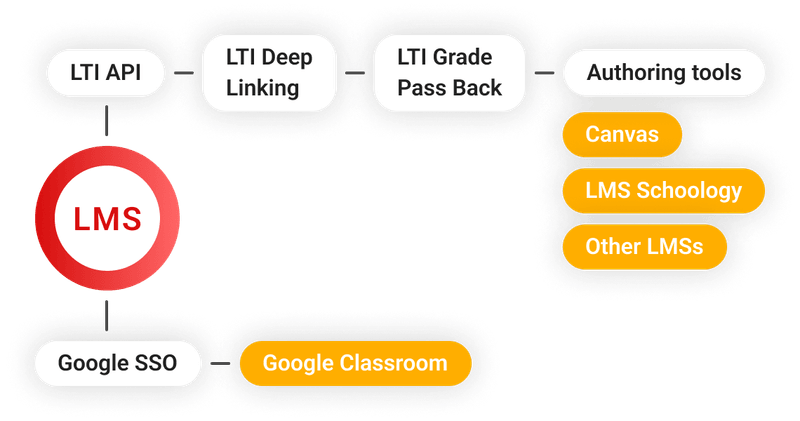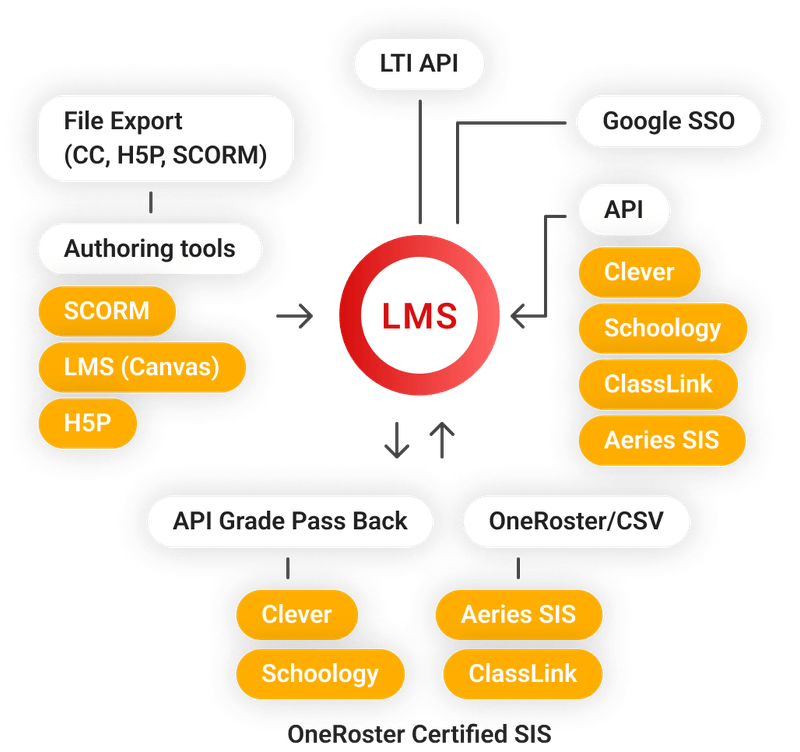LMS integration refers to the process of integrating a Learning Management System (LMS) with other educational systems, applications, or tools used by an institution. The primary goal of LMS integration is to enable seamless data exchange and interoperability between the LMS and these other systems, enhancing the overall learning experience and operational efficiency.
LMS integration typically involves establishing secure connections and data exchange protocols between the LMS and the target systems. This integration allows for the automatic sharing of relevant data, such as student information, course materials, grades, and learning activities, across different platforms.
Some common examples of LMS integration include:
- SIS (Student Information System) integration: Integrating the LMS with an SIS allows for the automatic provisioning of student accounts, enrollment data, and course information within the LMS. This ensures that the LMS has up-to-date student data from the authoritative source (SIS).
- Content management system integration: Integrating the LMS with a content management system enables instructors to easily import and manage course materials, such as documents, presentations, and multimedia resources, within the LMS.
- Video conferencing and collaboration tools integration: Integrating the LMS with video conferencing and collaboration tools facilitates virtual classroom sessions, online meetings, and real-time collaboration among students and instructors.
- Assessment and grading tools integration: Integrating the LMS with assessment and grading tools allows for the seamless delivery and grading of quizzes, exams, and assignments within the LMS environment.
- Analytics and reporting tools integration: LMS data can be integrated with analytics and reporting tools to generate comprehensive reports, dashboards, and insights about student performance, course engagement, and overall learning outcomes.
LMS integration not only streamlines administrative processes and reduces manual data entry but also enhances the overall learning experience by providing a more cohesive and integrated educational environment. It facilitates better collaboration among instructors, students, and administrators, while also ensuring data consistency and security across different systems.
Furthermore, LMS integration allows for the customization and extension of the LMS functionality by leveraging the capabilities of other specialized tools and applications, making the learning experience more engaging, personalized, and effective.









